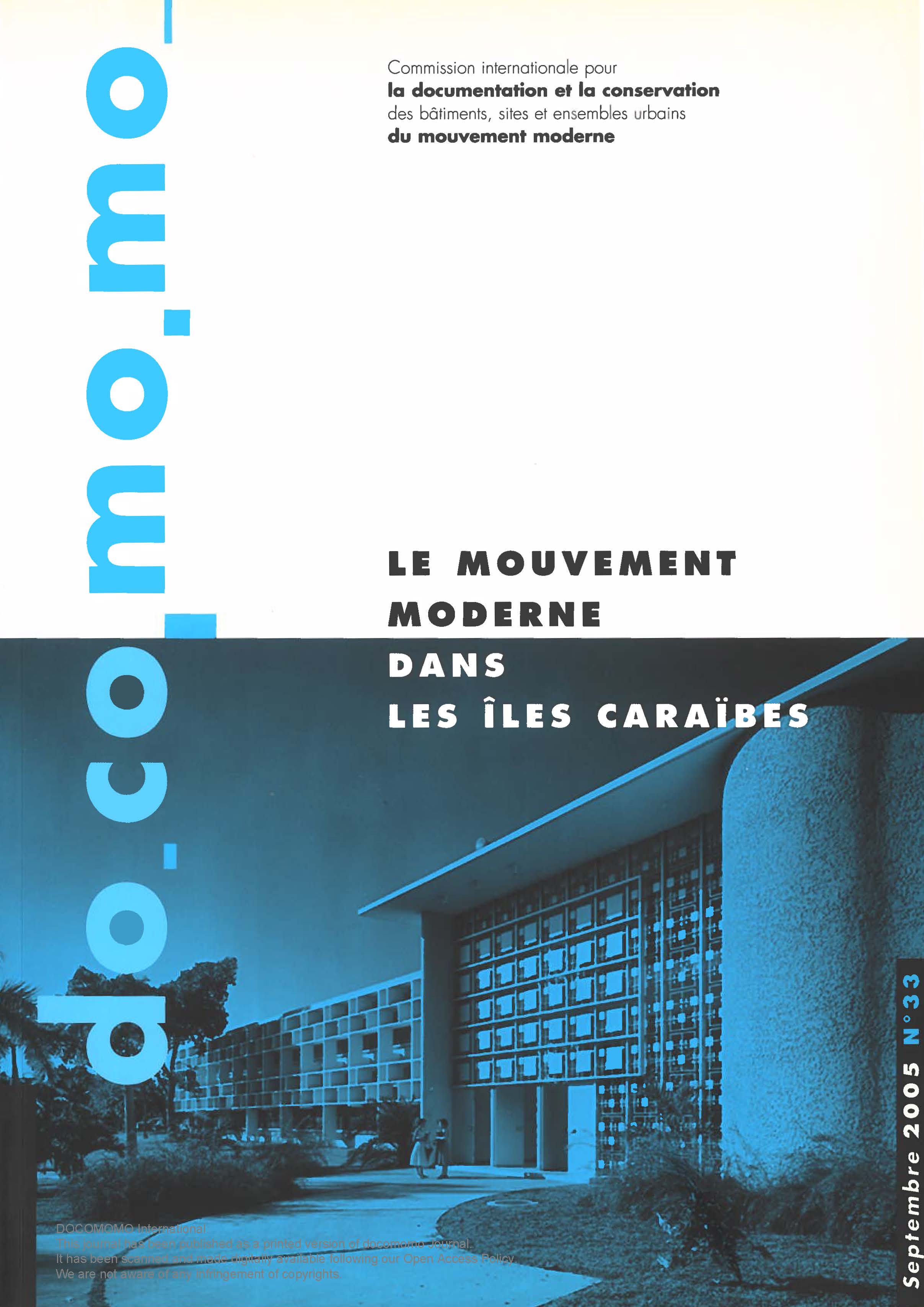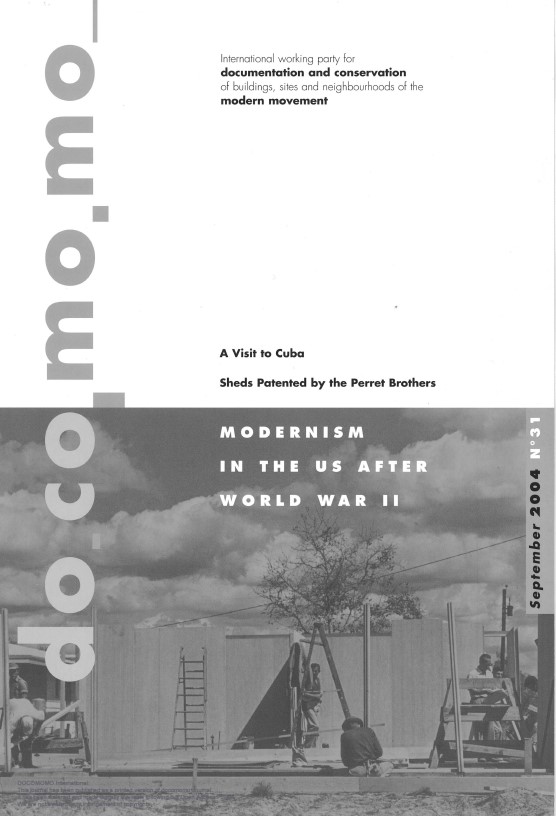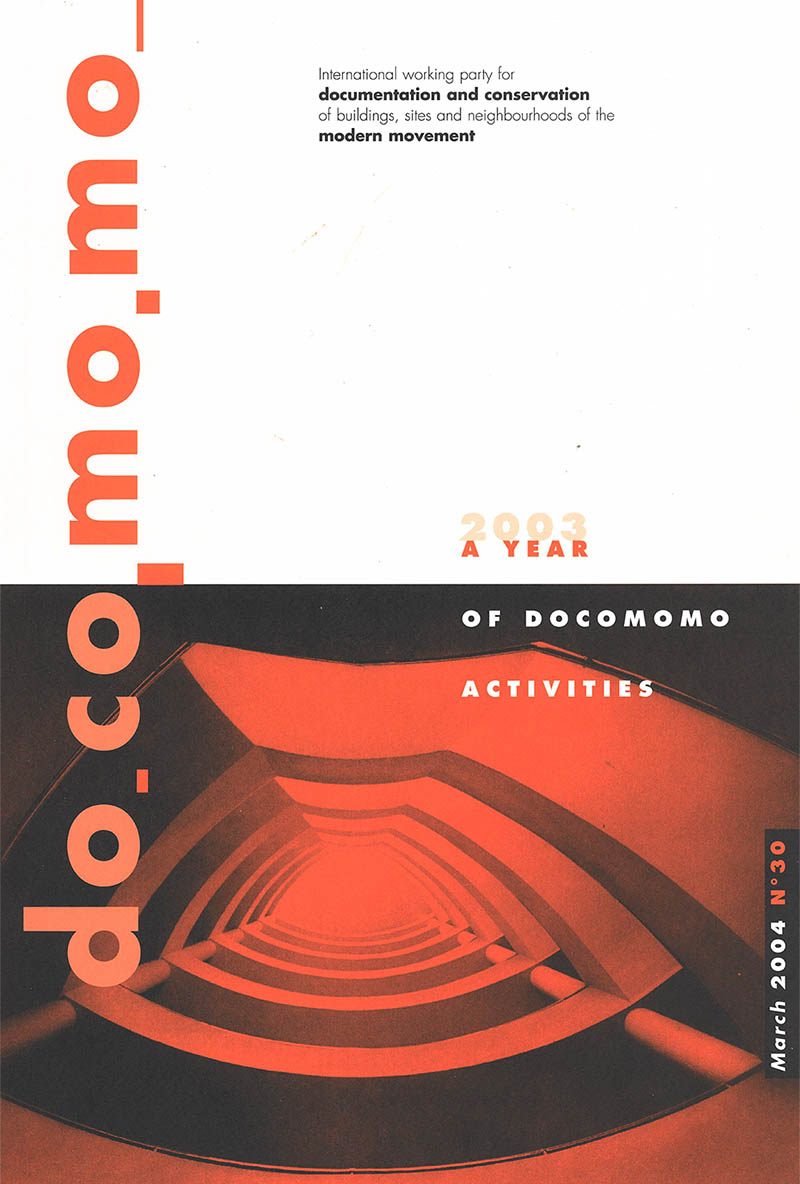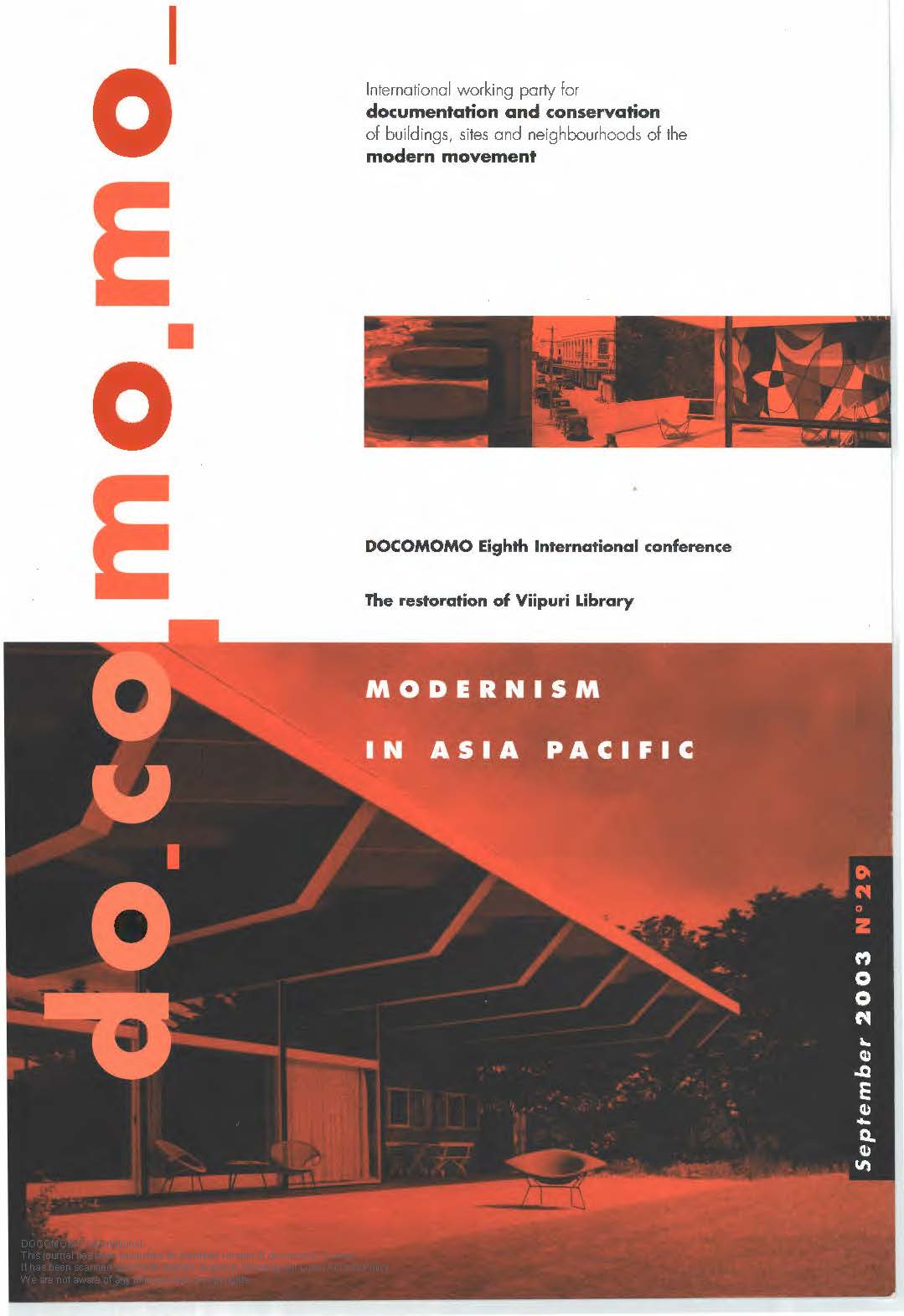-
 High DensityNo. 50 (2014)
High DensityNo. 50 (2014)Editors: Ana Tostões, Zara Ferreira
Guest editors: Eui-Sung Yi
Keywords: Modern Movement, Modern architecture, High density architecture, Urban growth, Modern urban planning.The debates that followed the World Design Conference (WoDeCo, Tokyo, 1960) on the search for a “total Image for the 20th Century” pointed out among worldwide designers, architects and planners, viewpoints and intellectual ideas concerning the future of the city, particularly in the wake of technological and scientific advancement in industry. At the time of the WoDeCo, progressive architects formed the “Metabolism” group and proposed their concepts for dealing with the increasing complexity of the cities rising. Debating over the ideal city and promoting a kind of experimental architecture based on ideas of life styles and communities for a new era, its biological name suggests that buildings and cities should be designed in the same organic way that the material substance of a natural organism propagates adapting to its environment by changing its forms in rapid succession.
2014-08-01 -
 For an Architect’s TrainingNo. 49 (2013)
For an Architect’s TrainingNo. 49 (2013)Editors: Ana Tostões, Ivan Blasi
Guest editors: Gonçalo Canto Moniz
Keywords: Modern Movement, Modern architecture, Architectural education, Education of modern architecture.The variety of discussions on architects’ mission, on architectural discipline and the recall on some key figures explain the argument of this Journal entitled For an Architect’s Training. The title quotes Walter Gropius’ “Blueprint for an architect’s training” spread through the French magazine L’Architecture d’Aujourd’hui in February 1950 (number 28), dedicated to “Walter Gropius, the spread of an idea” and realized by Paul Rudolph under the direction of Gropius himself who developed his ideas on design education between art and technique, creation, research and applied science.
2013-11-01 -
 Modern Africa, Tropical ArchitectureNo. 48 (2013)
Modern Africa, Tropical ArchitectureNo. 48 (2013)Editors: Ana Tostões, Ivan Blasi
Keywords: Modern Movement, Modern architecture, Tropical architecture, Design with climate, African modern architecture.Since the 1990s architectural historians discovered Modern architecture in Africa as part of a cultural production related to colonialism. With the introduction of postcolonial theory in the historiography of architecture, an exclusively ideological critical sense has been developed preventing disciplinary autonomy or practice of architecture and finally condemning any objective look. Recently, the development of concepts such as hybrid or the otherness has been promoting a nuanced historical analysis about architecture and politics in the 20th century in Africa. The recognition that a widespread awareness of Modern Movement architecture has always been serving colonization involves rethinking the basic principle of Modern welfare society and practiced architecture as a mission: how Modern principles have been exchanged, resulting from a Eurocentric culture with the cultures from the East and Africa. In addition, it must be said that the case of Sub–Saharan Lusophone Africa is now beginning to be studied in depth putting together peripheral universes.
2013-07-01 -
 Global DesignNo. 47 (2012)
Global DesignNo. 47 (2012)Editors: Ana Tostões, Ivan Blasi
Guest editors: Bárbara Coutinho
Keywords: Modern Movement, Modern architecture, Modern interior design, Furniture modern design, Modern global design.Thanks to Finland, the motto “Survival of Modern” justifies going deeper in the relation that connects form and function, aesthetics and ethics. That’s also why the argument is Global Design. The aim of this collective and interdisciplinary reflexion is to contribute for the discussion that relates Modern heritage and interior space, common daily life and musealization of Modern Interior Spaces, gathered underneath a global strategy to better understand and preserve these delicate monuments. In fact, the interior space with all devices and furniture pieces is frequently neglected as an essential matter in safeguard interventions.
2012-12-01 -
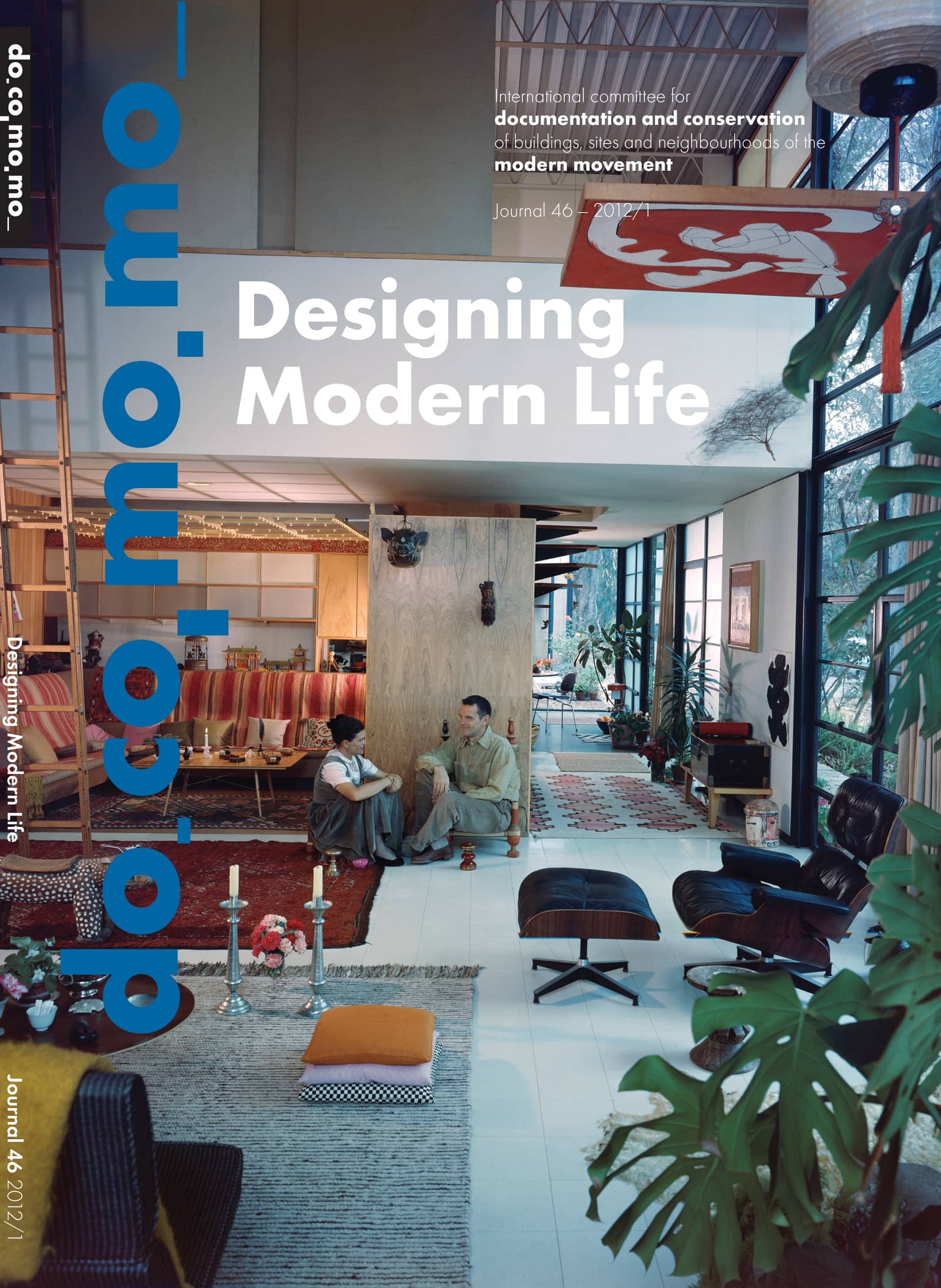 Designing Modern LifeNo. 46 (2012)
Designing Modern LifeNo. 46 (2012)Editors: Ana Tostões, Ivan Blasi
Guest editors: Bárbara Coutinho
Keywords: Modern Movement, Modern architecture, Modern interior design, Furniture modern design, Modern living.The aim is to contribute for the discussion that relates modern heritage and interior space, common daily life and musealization of Modern Interior Spaces, gathered underneath a global strategy, to better understand and preserve these delicate monuments. In fact, the interior space with all devices and furniture pieces is frequently not appreciated as an essential matter in safeguard interventions. Ranging from restoration process research and know-how, new modern materials and techniques are discussed facing up to new conservation process and innovative rehabilitation solutions, as well. One knows that Modern spatiality must require furniture conceived under a unitary design concept, which implies today to identify every detail with the aim of a reconstruction process, where research on documentation is one of the success keys.
2012-07-01 -
 Bridges and InfrastructuresNo. 45 (2011)
Bridges and InfrastructuresNo. 45 (2011)Editors: Ana Tostões, Ivan Blasi
Guest editors: Kyo Takenouchi, Ola Wedebrunn
Keywords: Modern Movement, Modern architecture, Modern bridges, Modern infrastructures, Modern engineering.The search on Bridges and Infrastructures has to do with a matter of connecting. To launch bridges seems to be a kind of life requirement, as far as it is the way to connect sides, which means improving relations and energies, desire and intelligence. Bridges and Infrastructures have the function of connecting pieces of land and the role of creating a connected world. The matter is to make links and establish a network. In fact, it is a global network made of works of art, which have a physical and material presence balancing between values such as economy and elegance and providing a better life for every man. Seeking audaciously for innovation, research contributes to these large scale structures as it has been improving material capacities and technical creation. It is a huge field that lay infinite possibilities for art and science to perceive changes of social, aesthetic, technical standards and norms.
2011-12-01 -
 Modern and SustainableNo. 44 (2011)
Modern and SustainableNo. 44 (2011)Editors: Ana Tostões, Ivan Blasi
Guest editors: Theodore Prudon
Keywords: Modern Movement, Modern architecture, Sustainable architecture, Responsible architecture, Global design.Modern Movement Architecture is envisioned as a concept that deals with forms, spaces, techniques and social responsibility. In this docomomo Journal, the contributions on this discussion put together modernity and Modern heritage, economy and energy saving, the social mission and the responsibility of architects towards the future. Modern Movement is often mistakenly related to a style, perceived in a skin–deep point of view and superficially adopted as simple form, as a modern shape, when in fact Modern Movement has always shown great concern with such issues, seeking for eficiency and economy, i.e., an accurate use of materials, a design approach that incorporates intelligent saving resources in order to create a better world.
2011-08-01 -
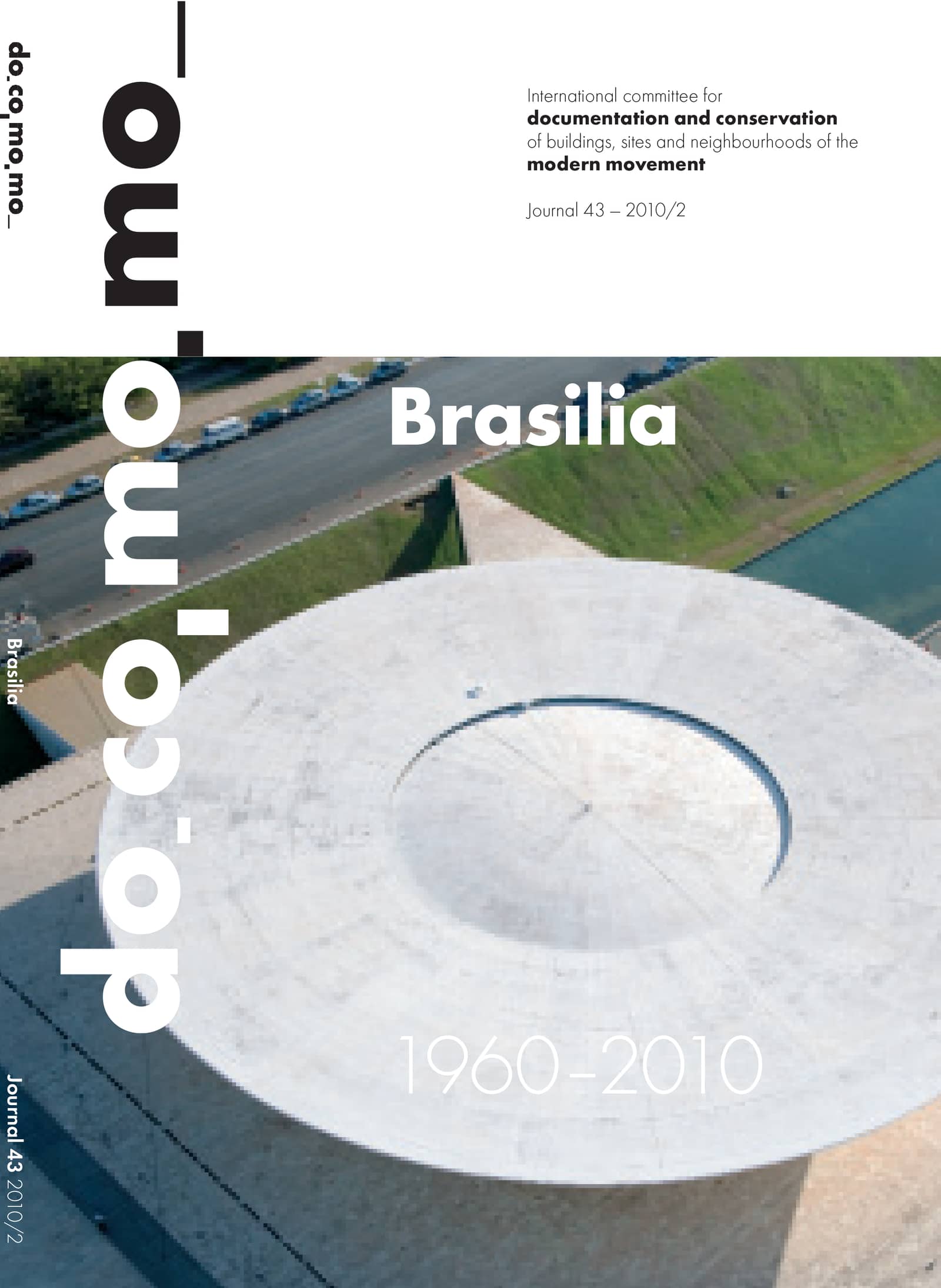 BrasiliaNo. 43 (2010)
BrasiliaNo. 43 (2010)Editors: Ana Tostões, Ivan Blasi
Guest editors: Sylvia Ficher, Andrey Rosenthal Schlee
Keywords: Modern Movement, Modern architecture, Brasilia modern architecture, World Heritage, Modern urban design.Since Brasilia’s World Heritage inscription in 1987, the city has developed public awareness regarding the value of a major accomplishment in the history of urbanism. The singularity of Brasilia lies in its ability of being simultaneously rooted in the past while looking ahead to the future, envisioning an approach that should affirm Brazil’s industrialization effort and the need to provide access to life quality incorporating a specific genuine cultural tradition; an approach where the new capital should be the image of the homeland. Lúcio Costa, the architect who sensed and perceived the need to rescue architectural heritage, formulated unprecedented theoretical principles, articulating both realities. He was aware of the fact that modern architecture was a powerful means to foster a national identity because, according to modern principles argued in Brazil, a bond should exist between an erudite avant-garde and traditional popular features. Costa revealed the structural resemblance between raw architecture from the 18th Century—the plain Portuguese style—and the new constructions, discovering the same logic, rationality, rigor and strictness.
2010-11-01 -
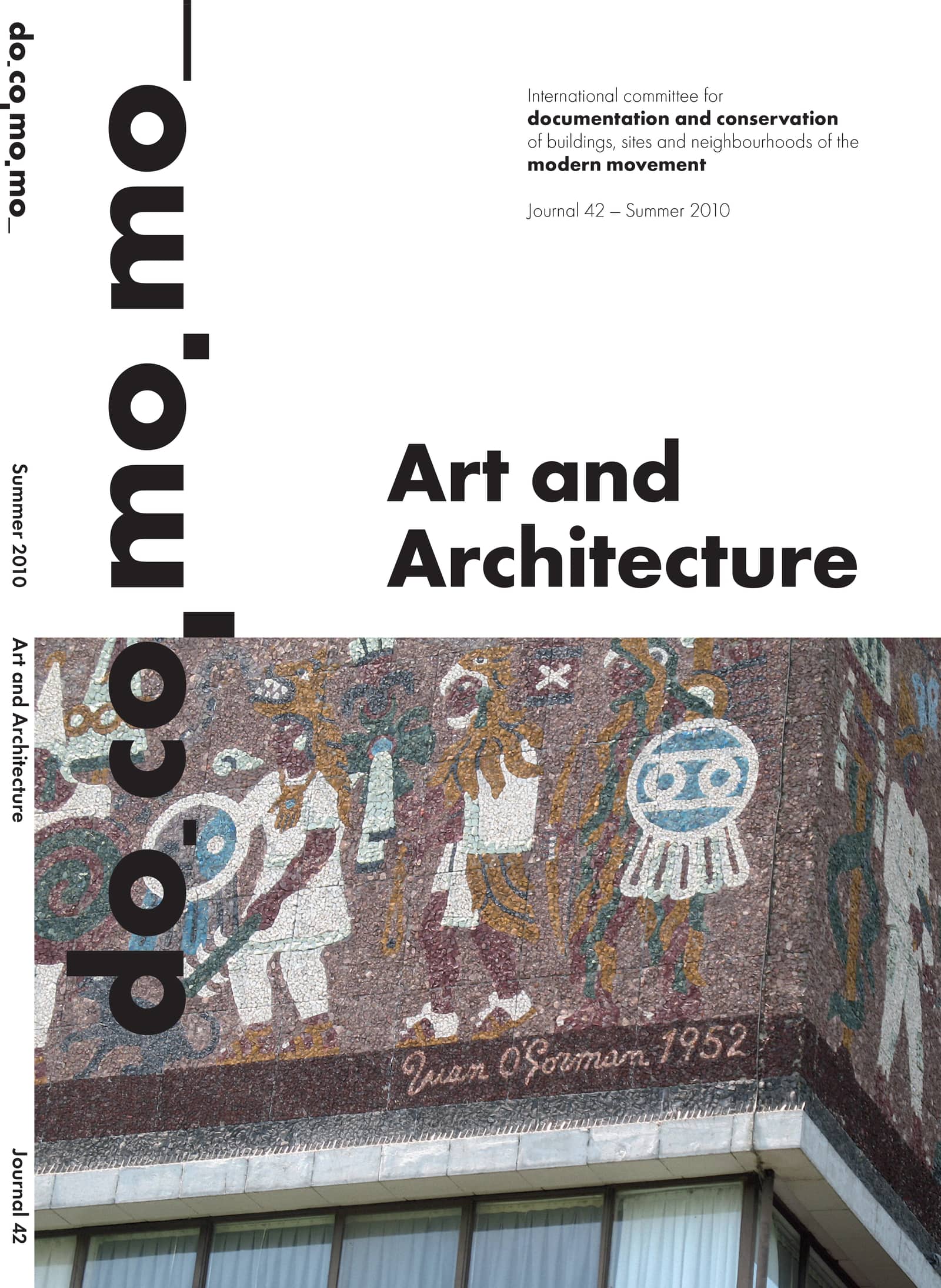 Art and ArchitectureNo. 42 (2010)
Art and ArchitectureNo. 42 (2010)Editors: Ana Tostões, Ivan Blasi
Guest editors: Horacio Torrent
Keywords: Modern Movement, Modern architecture, Art and architecture, Modern art.The late CIAM discussions, namely the ones that took part in the scope of the Bergamo Conference in 1947, brought social and intensive public aspirations. Between North and South, the new world retook the European avant-garde issues implementing the most collective values for a better future to come. Giedion’s Architecture You and Me or the struggle for a New Monumentality, were the placed questions that received an extraordinary eco from American Architecture which emerged with a creative energy. Therefore, in our days, the aim is to deepen understand the process and to find the paths for the future. A future that we may create with such awareness that may, generously, give us the tools for increase nowadays architecture and city planning.
2010-07-01 -
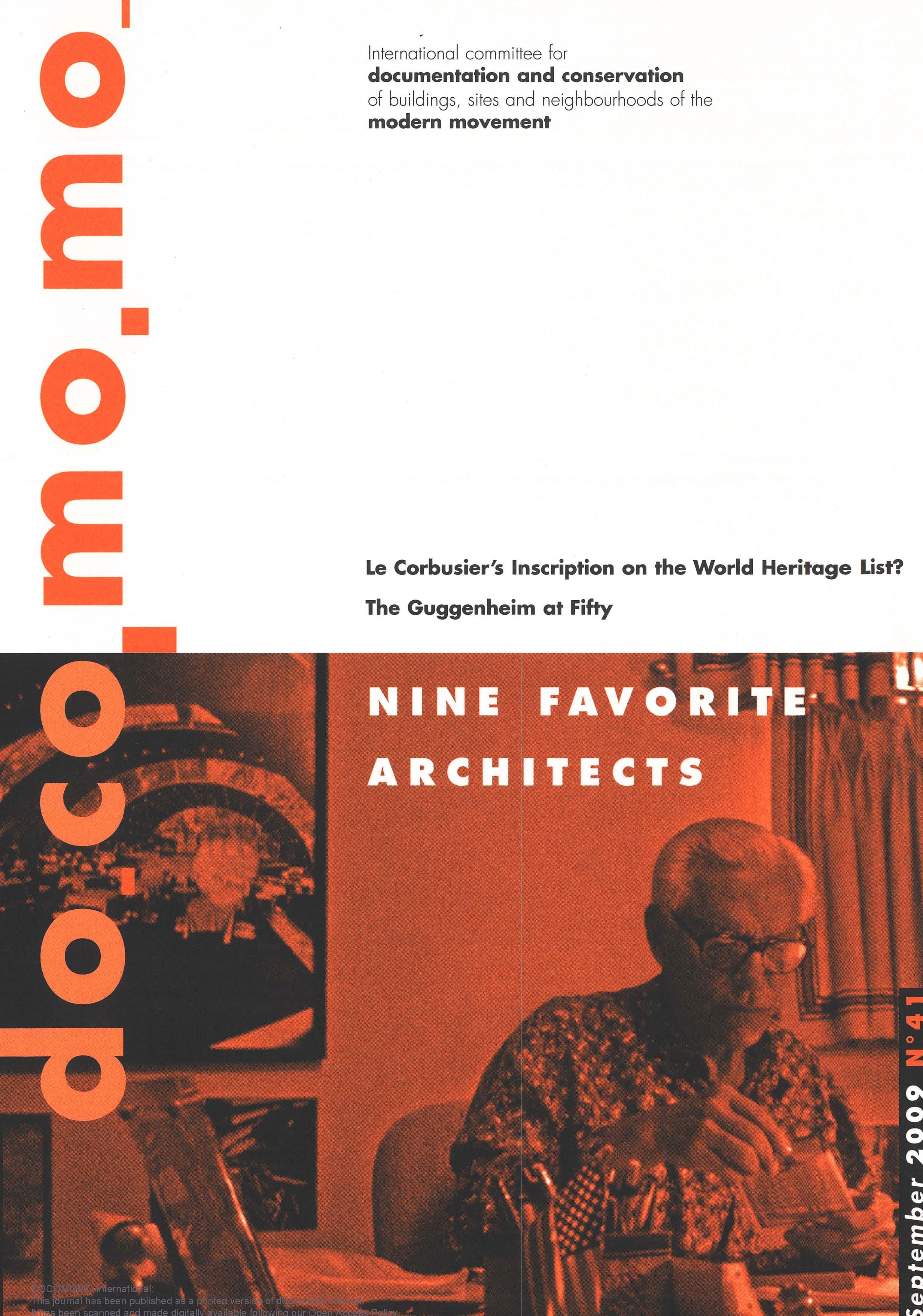 Nine Favorite ArchitectsNo. 41 (2009)
Nine Favorite ArchitectsNo. 41 (2009)This is the 40th issue of the Docomomo Journal. I remember that in September 2002, when I started my chairmanship, the publication of the Journal seemed a most challenging responsibility. Our aim was to publish a series of six issues, which at the time seemed a considerable accomplishment. In six years we have been able to double that number. This March issue is the best demonstration of Docomomo's growing significance considering both the relevance of the themes it addresses, and its value as a mediator between chapters and public institutions. The table of contents exemplifies at best the Journal's dual character. We are very pleased, on the one hand, to celebrate in our pages the 100-year anniversary of Tel Aviv, not to mention the city's inscription on the World Heritage List. Since Tel Aviv's inscription in 2003, the city has significantly developed public awareness regarding the value of architectural landmarks. All preservation efforts are based on a recent statute that protects built areas and restricts construction in the vicinity of designated landmarks. As the Unesco declaration notes, if the entire White City project is to succeed, outlying areas around landmark buildings in Tel Aviv's White City must be preserved. By selecting authors from different disciplines and backgrounds our guest editor Jeremie Hoffmann, the architect responsible for the preservation management of the White City on behalf of Unesco, has much more than outlined governance's best practices: in fact he introduces a new reading of Geddes's master plan for Tel Aviv and of the Bauhaus legacy as a layered history leading to the creation of a new Hebrew tradition in society and culture. On the other hand, after the special issue of the Journal entitled "Other Modernisms" (March 2007), we are also happy to publish the Registers' selection on "Education." Thanks to the well-developed submissions of 36 chapters we are able to present a wide range of examples of kindergartens, elementary and secondary schools, academies, university campuses, laboratories, libraries and museums from the 1920s to the 1980s. The gathered documentation-the necessary condition for safeguarding endeavors-proves that the Docomomo community is fully engaged in the process, and is in itself a call for the Registers' future extension.
2022-11-10 -
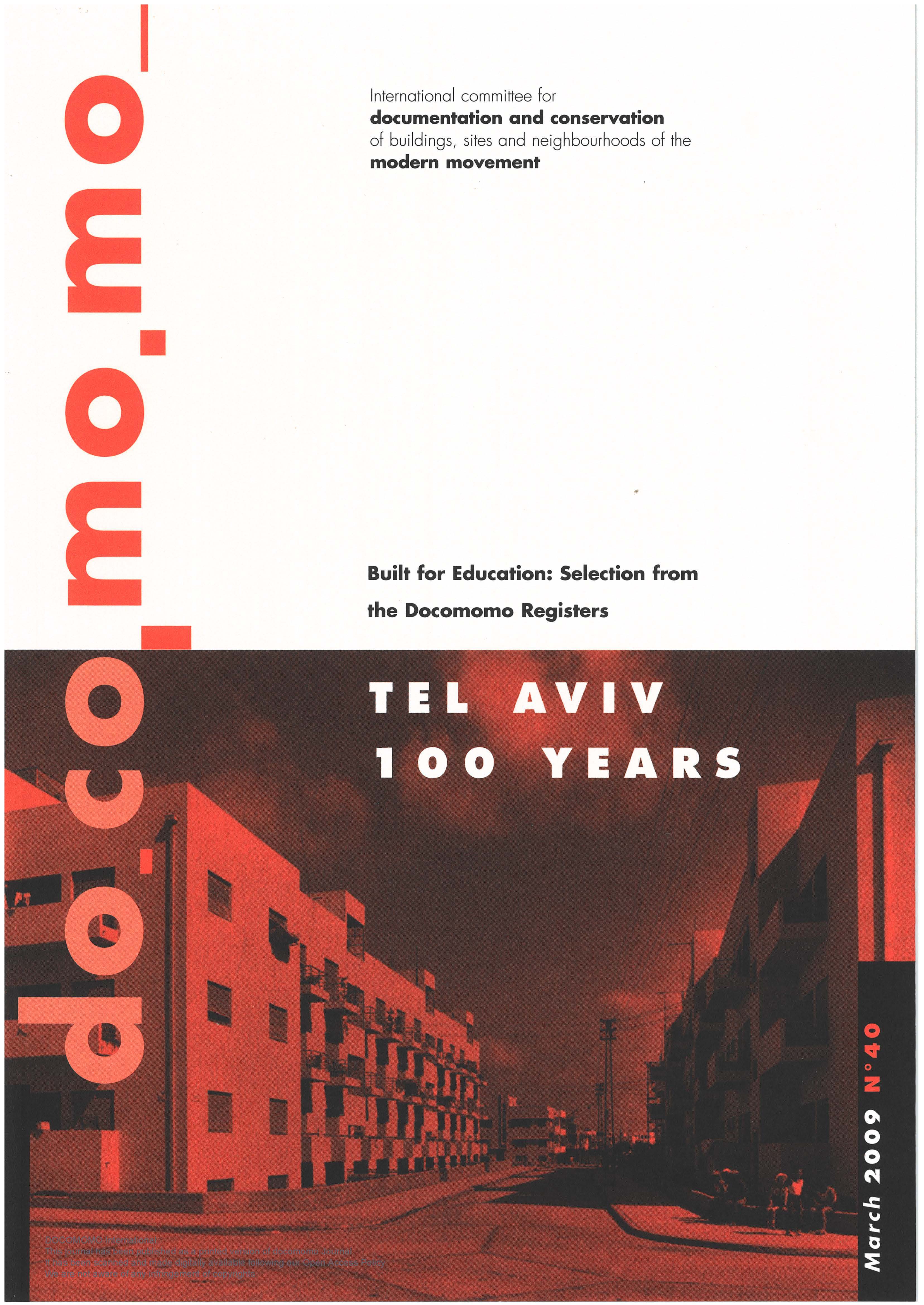 Tel Aviv 100 YearsNo. 40 (40)
Tel Aviv 100 YearsNo. 40 (40)This is the 40th issue of the Docomomo Journal. I remember that in September 2002, when I started my chairmanship, the publication of the Journal seemed a most challenging responsibility. Our aim was to publish a series of six issues, which at the time seemed a considerable accomplishment. In six years we have been able to double that number. This March issue is the best demonstration of Docomomo's growing significance considering both the relevance of the themes it addresses, and its value as a mediator between chapters and public institutions. The table of contents exemplifies at best the Journal's dual character. We are very pleased, on the one hand, to celebrate in our pages the 100-year anniversary of Tel Aviv, not to mention the city's inscription on the World Heritage List. Since Tel Aviv's inscription in 2003, the city has significantly developed public awareness regarding the value of architectural landmarks. All preservation efforts are based on a recent statute that protects built areas and restricts construction in the vicinity of designated landmarks. As the Unesco declaration notes, if the entire White City project is to succeed, outlying areas around landmark buildings in Tel Aviv's White City must be preserved. By selecting authors from different disciplines and backgrounds our guest editor Jeremie Hoffmann, the architect responsible for the preservation management of the White City on behalf of Unesco, has much more than outlined governance's best practices: in fact he introduces a new reading of Geddes's master plan for Tel Aviv and of the Bauhaus legacy as a layered history leading to the creation of a new Hebrew tradition in society and culture. On the other hand, after the special issue of the Journal entitled "Other Modernisms" (March 2007), we are also happy to publish the Registers' selection on "Education." Thanks to the well-developed submissions of 36 chapters we are able to present a wide range of examples of kindergartens, elementary and secondary schools, academies, university campuses, laboratories, libraries and museums from the 1920s to the 1980s. The gathered documentation-the necessary condition for safeguarding endeavors-proves that the Docomomo community is fully engaged in the process, and is in itself a call for the Registers' future extension.
2022-11-10 -
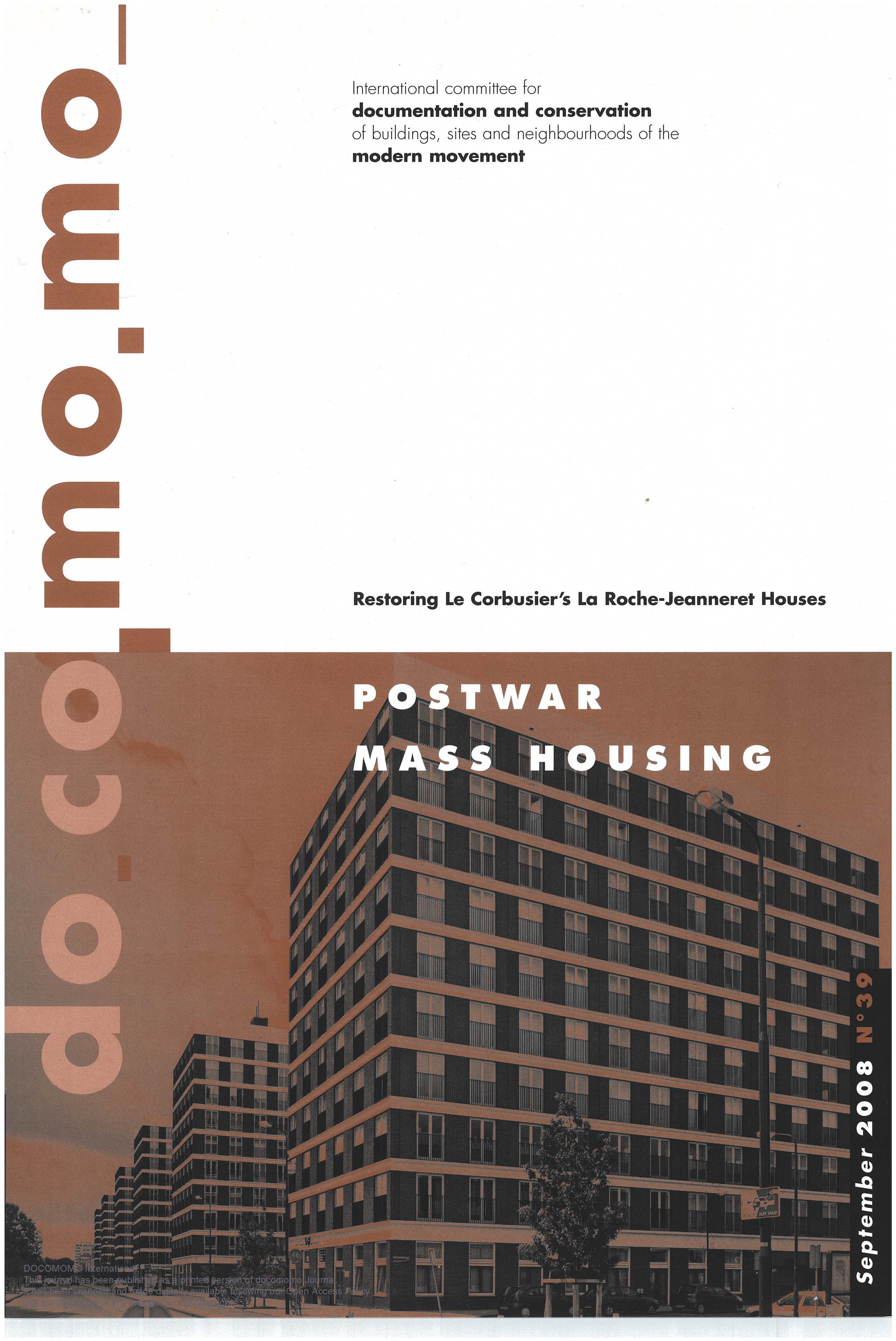 Postwar Mass HousingNo. 39 (2008)
Postwar Mass HousingNo. 39 (2008)At a time when the American crisis of subprime loans has spread a feeling of instability to people at the global level, we-architects, town-planners, historians and the many professionals involved in the management of the housing market-have finally understood that dwellings remain the priority of our contemporary culture. Born as the major task for architects in the heroic years of the modern movement, mass housing went through a wide range of transformcitions and changes in reception. "New Dwelling Equals New Architecture" became the credo for a generation of designers all over Europe and beyond. It is worth acknowledging that just a few of these interventions are regarded to be of heritage value. Surprisingly, the World Heritage Center in summer 2008 has included the Berlin Siedlung complexes in the WHL. We like to think that Docomomo has contributed to this result.
Reconstruction after WWII responded to housing large sections of the population, developing the city towards the outskirts, colonizing new territories, and moving the borders. Out of the debris the society grew with new needs and inew desires. It created a delicate equilibrium, whose benefits lasted for, at most, half a century. The recent phenomena of social exclusion, discrimination, poverty and crime are largely born out of the deficiencies of the reconstruction policies.
It will be a true challenge for us all to take responsibility for answering to these inequalities though a policy of renovation of the dream of post-WWII mass housing. Miles Glendinning has agreed to look closely at this complex and problematic subject, contributing under another perspective to the theme of the 10th conference, offering a wide spectrum of intervention policies.
2022-11-10 -
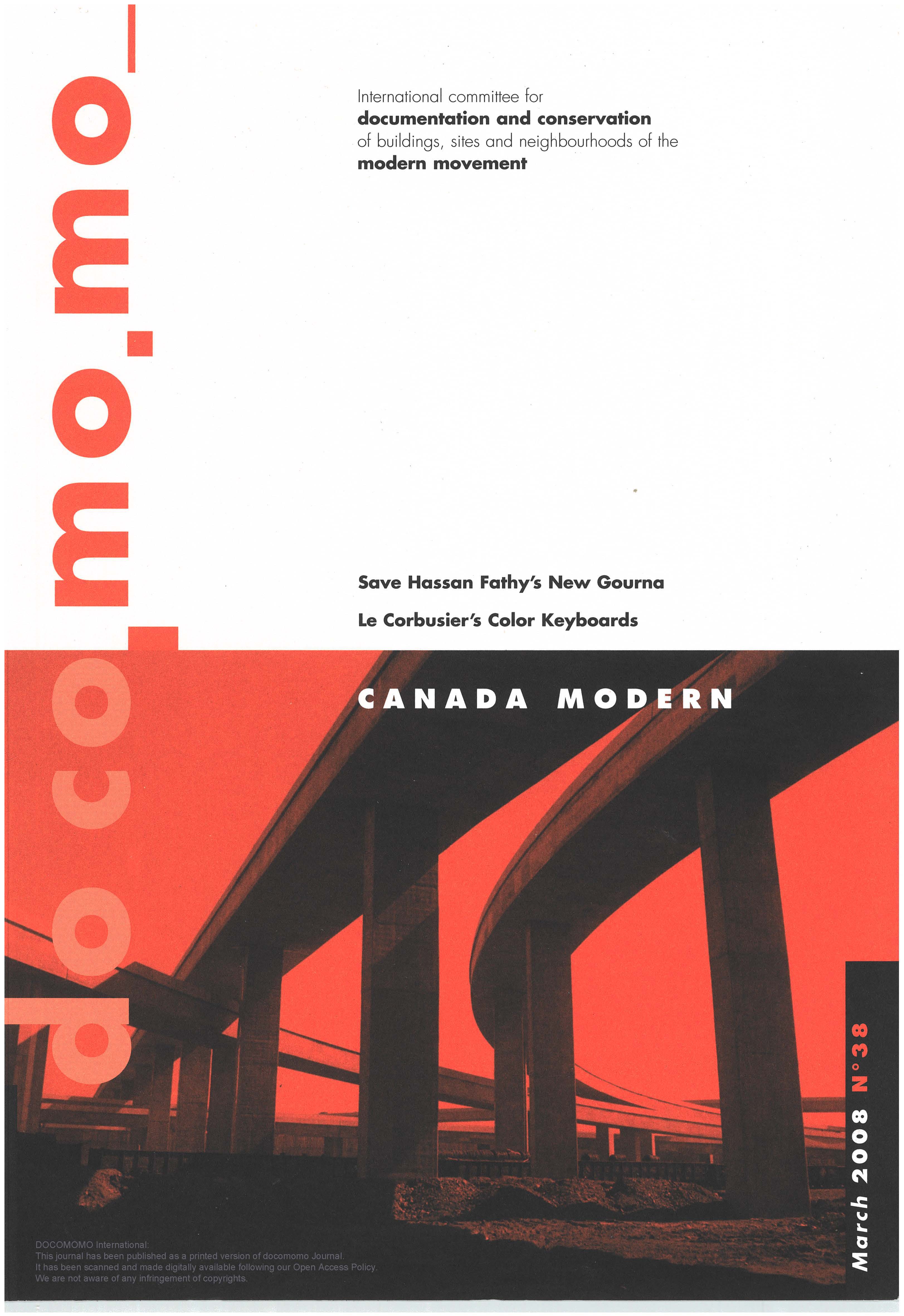 Canada ModernNo. 38 (2008)
Canada ModernNo. 38 (2008)The first quarter of 2008 has proved quite sensational for twentieth century heritage. Several occurrences show that the future of modern architecture, despite the improvement of the debates and increasing number of modern buildings that gain the status of modern monuments, is still under serious threat. Docomomo wishes to reassert its most pressing objective: to preserve the authenticity of modern buildings jeopardized by thoughtless changes.
2022-11-10 -
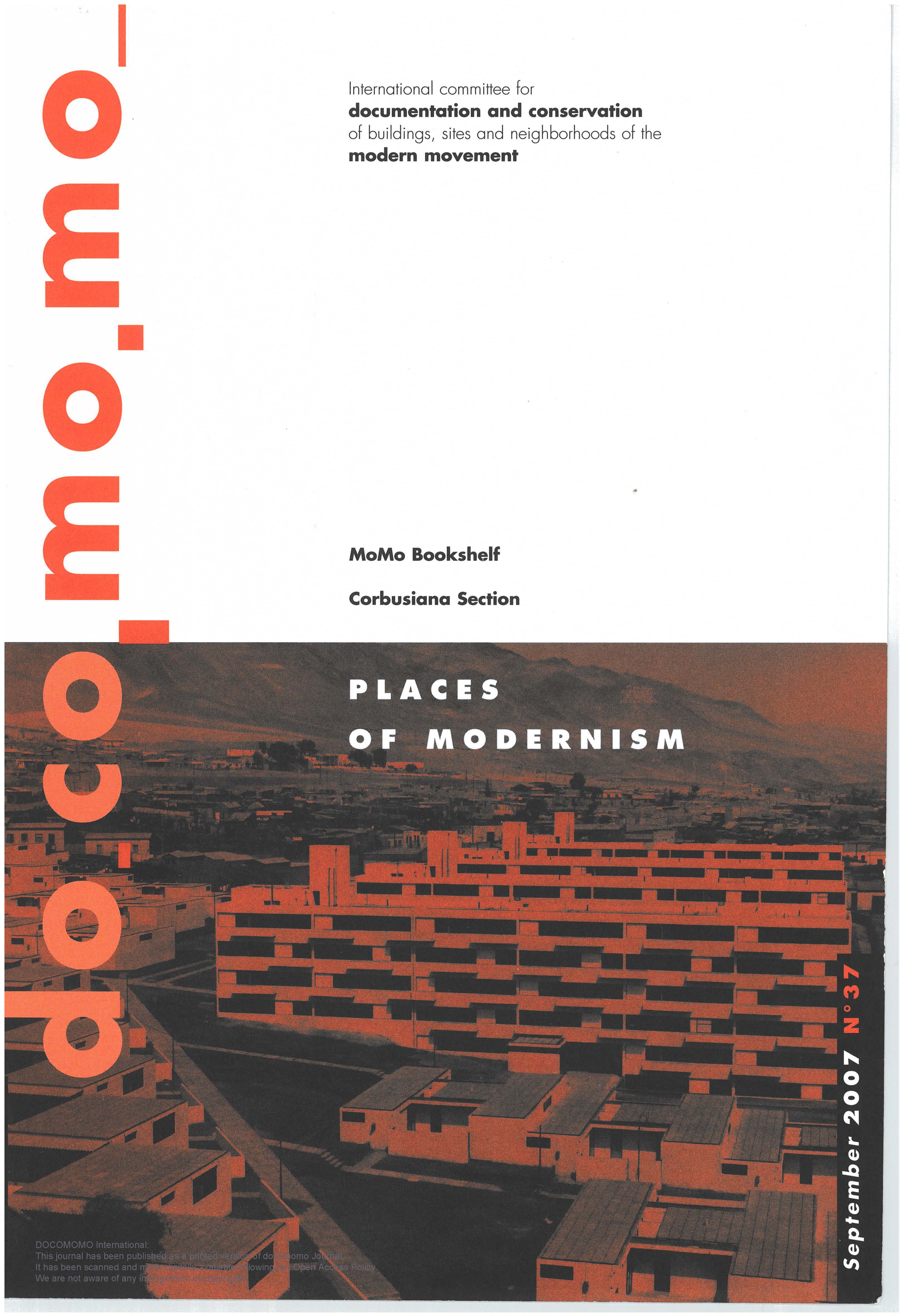 Places of ModernismNo. 37 (2007)
Places of ModernismNo. 37 (2007)The Docomomo Journal continues to unravel the many implications related to the real differences between societies and cultures, explicitly expressed in architectural practices. Searching for the continuity with themes and issues that have precedents in Docomomo history herein moves us to consider the notion of "otherness" as but a tool to understand twentieth century heritage around the world. Accordingly, the construction of "intertwined histories" represents the major new challenge of Docomomo lnternational's coming years.
Our goal, calling for new geographies and new morphologies, remains the mapping of "otherness." Introducing other modern trajectories to the mainstream of twentieth century architectural histories, the articles included in this issue of the Docomomo Journal are relevant contributions to this undertaking. We wish to thank all our members-young scholars, historians and architects-, who pertinently support this project with their valuable input.2022-11-10 -
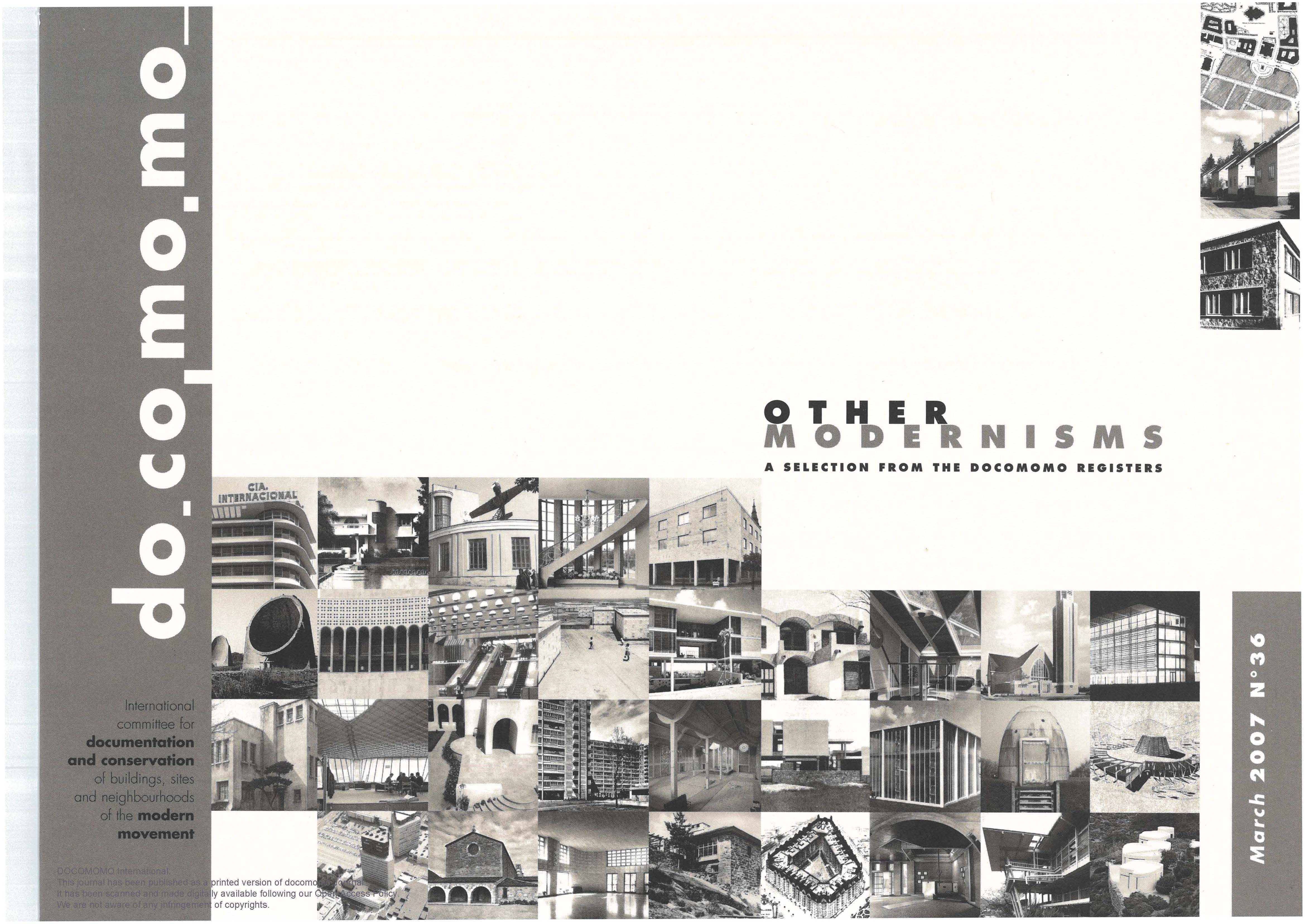 Other ModernismsNo. 36 (2007)
Other ModernismsNo. 36 (2007)Beyond the principles of selecting and listing, the documenting process as a whole is central to Docomomo's guidelines for the understanding of our modern heritage. The current issue of the Journal develops a significant standpoint within this process. The truism is that the act of documenting represents more than an investigation practice in itself. It allows the built artifact to gather the sum of information required to reach the status of monument. This double-sided postulation has been at the heart of the debate since Docomomo started to be active and gain recognition as a proponent of novel approaches in the field of modern heritage. By re-establishing the association between documentation and the modern monument, Docomomo has prompted a new assessment of Le Goff's seminal understanding of the document-monument-memory trilogy. The seven years that separate the first publication of the Docomomo Registers (Rotterdam: 0 l 0 Publishers, 2000) from the selection included in this issue demonstrate the establishment of a common ground widely shared by individuals and institutions alike. At stake here is more than the simple increase of the number of chapters and consequently of the items to be documented. This new vision has fostered new fertile practices that are gradually changing the strategy of conservation, from the appreciation of modern buildings as frozen icons towards a participatory process of adaptive transformations and the redefinition of the legacy of modernity in globalized societies. The reformulation of a comprehensive cult of modern monuments is as yet but a slogan; it should become a banner for the recognition of modern cultural identities worldwide, rising above the conditions of political oppression and economic fragility that sometimes still prevail.
2022-11-10 -
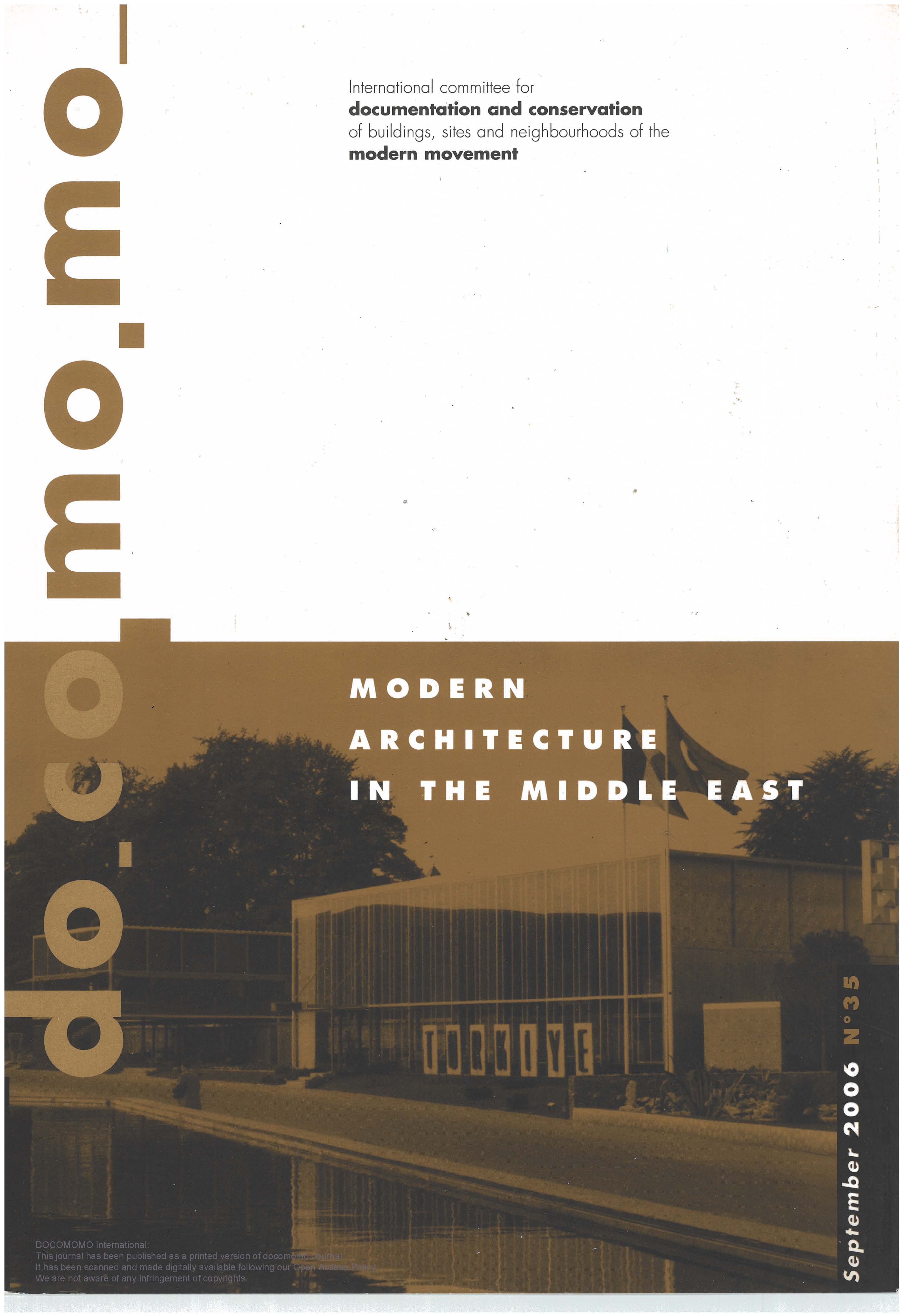 Modern Architecture in the Middle EastNo. 35 (2006)
Modern Architecture in the Middle EastNo. 35 (2006)This issue is dedicated to modern architecture in the Middle East, and pairing with the Ninth Docomomo International Conference hosted in Turkey, is indeed of special significance. The issue introduces a set of unexpected encounters involving a fresh new outlook on what Westerners construed or fantasized as "orientalism."
Facing the Western world from the Eastern edges of the Mediterranean Sea, these encounters are meant to shed light on another history that is conscious of its millenary relevance and uniqueness; a history of the whole that reiterates itself in the smallest parts, material and immaterial, in stones, in golden fragments, in blue-greenish screens, in distant songs, in its melancholy. But beyond the impressions and notions conveyed by each of these parts is the wish to present a historical account of the efforts carried out by ancient communities to become modern societies, interpreting their founding premises and the present tensions that enduringly strain them.2022-11-10 -
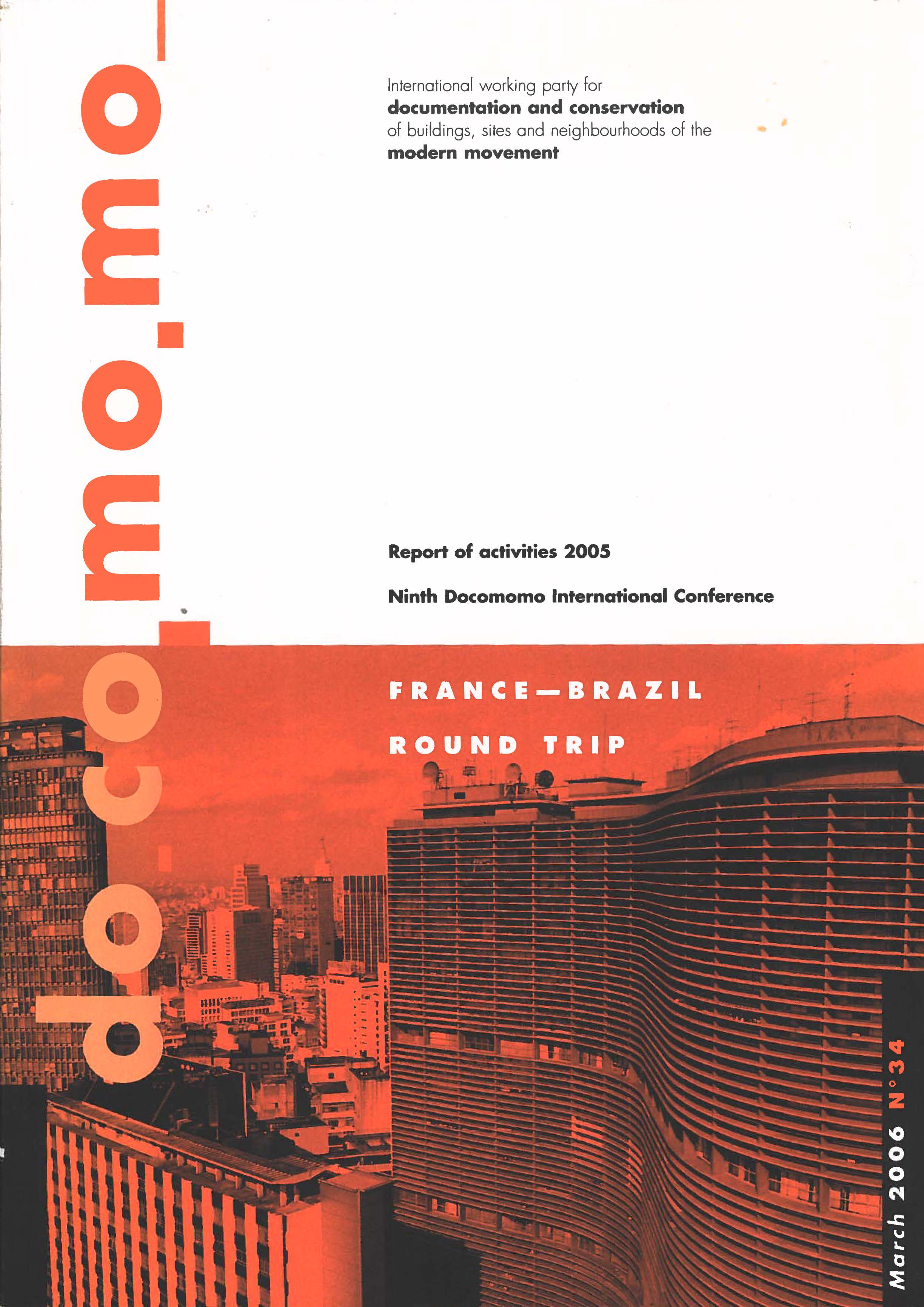 France-Brazil Round Trip. Report of Activities - Ninth Docomomo International ConferenceNo. 34 (2006)
France-Brazil Round Trip. Report of Activities - Ninth Docomomo International ConferenceNo. 34 (2006)After the special issue on oribbean modernisms, the new issue of Docomomo Journal, which includes on exce lent section dedicated to Brazil's modern architecture investigated under the lig_ht of international exchanges, shows that the spread of the modernist idioms in Central and Latin America is the true mark of an innovative new world. Evidently, the contribution of these countries hos given rise to autonomous architectures, whose trajectories offer a fresh appreciation of the symbiosis of Portuguese and Spanish cultures with the native creative essence. Beyond the issue of post-colonization, urban culture and architectural attempts have modernized these countries, and surpassed the simple legacy of European modern movement. In this context Brazil is the case study par excellence because the attempt to redefine national identity under the perspective of progressive politics goes for beyond the limits of architecture as a discipline. The papers delivered at the seminar "Impressions transatlontiques: le dialogue entre architectures nationale et etrangere au Bresil," which are published in this issue, are representative of the new course of scholarly research in the field. Recent publications mark the vitality of the current discourse and the urge lo renew and stimulate the debate on modern heritage.* Special thanks to Hugo Segawa and Anal Folbel from Docomomo Brazil for their commitment to Docomomo's plan of action and for their restless efforts in keeping alive the debate in their own country. Their contributions have been of precious help.
2023-05-23 -
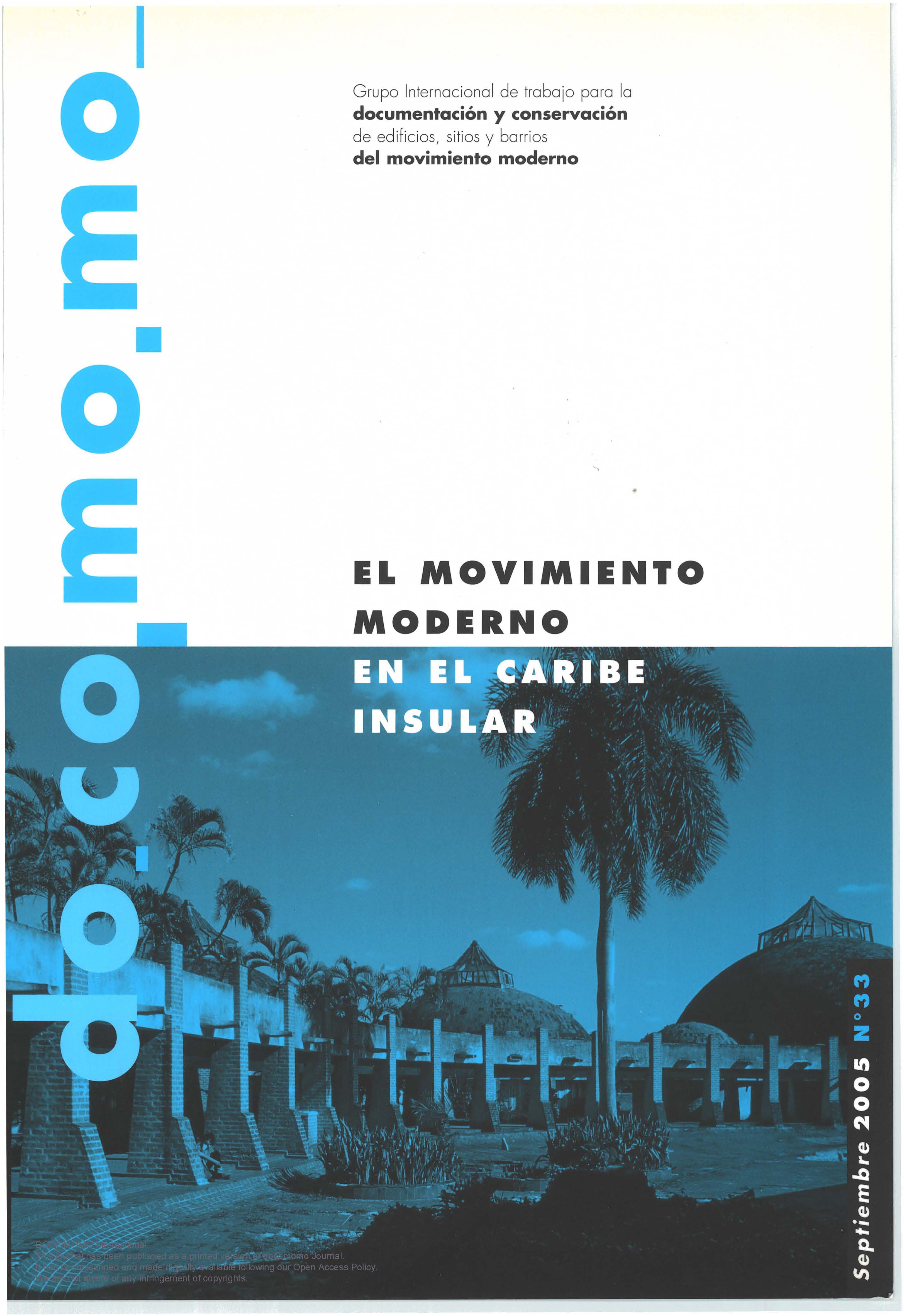 El Movimento Moderno En El Caribe InsularVol. 2 No. 33 (2005)
El Movimento Moderno En El Caribe InsularVol. 2 No. 33 (2005)La publicacion de este numero especial del Oocomomo Journal supone la culminacion de una labor llevada a cabo por parte de los numerosos poises que conforman la red de Docomomo.
2022-11-10 -
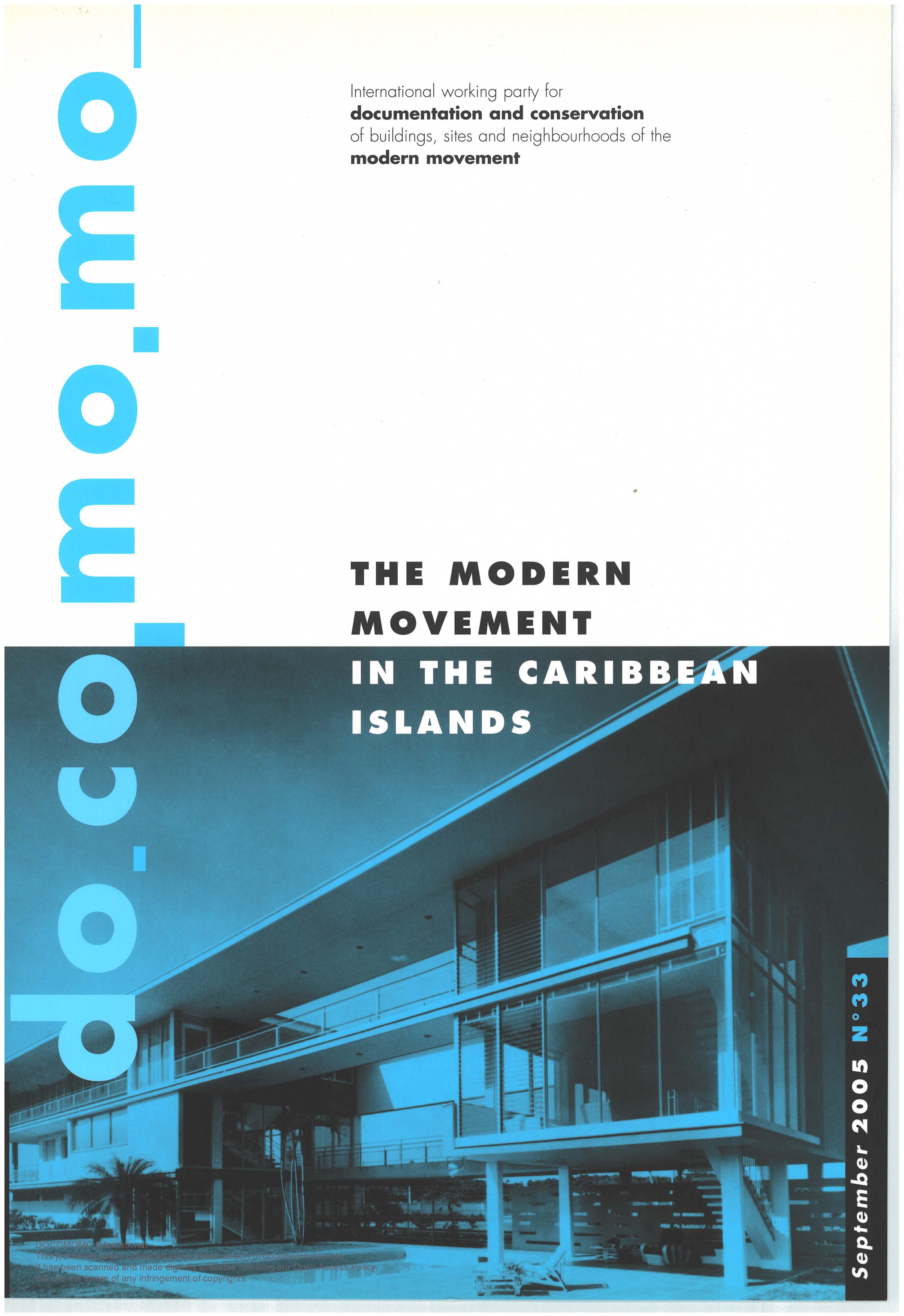 The Modern Movement in the Caribbean IslandsNo. 33 (2005)
The Modern Movement in the Caribbean IslandsNo. 33 (2005)The publication of this special issue of Docomomo Journal entirely dedicated to modern architecture in the Caribbean islands rewards the efforts of several of our network's members.
2022-11-10 -
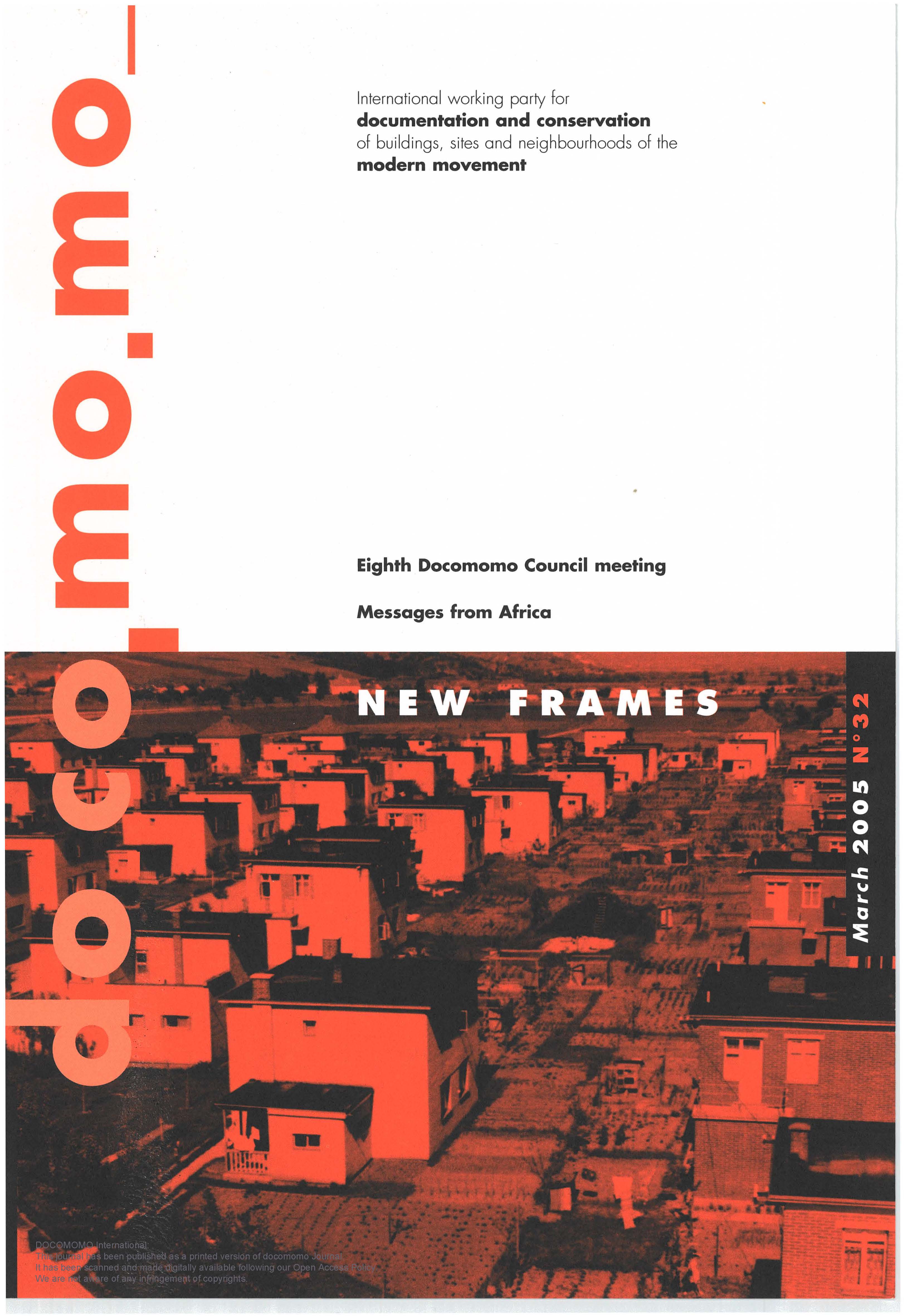 New FramesNo. 32 (2005)
New FramesNo. 32 (2005)What is the present status of modern heritage? From the Docomomo vantage point, it seems that both critical and theoretical perspectives are reaching a well-defined significance within the disciplines of architecture, urbanism, and preservation. Some extraordinary examples of good practice in restoration have identified the professional field with unprecedented authority. But we still need to develop the awareness that concepts such as 'modern' and 'heritage' are deeply rooted in Western mind frames and cultural approaches, which are however currently being questioned and redefined. Our new priority should now be to encompass the anthropological and sociological discourses within our understanding of modernity, which should allow heritage to include new dimensions, those of the intangible, of the spiritual, of the ordinary, of the vernacular, which are the essence of many other cultures worldwide.
2022-11-10
Current Issue
Information
publisher
Publisher

open access facilitated by SOAP | Stichting OpenAccess Platforms

